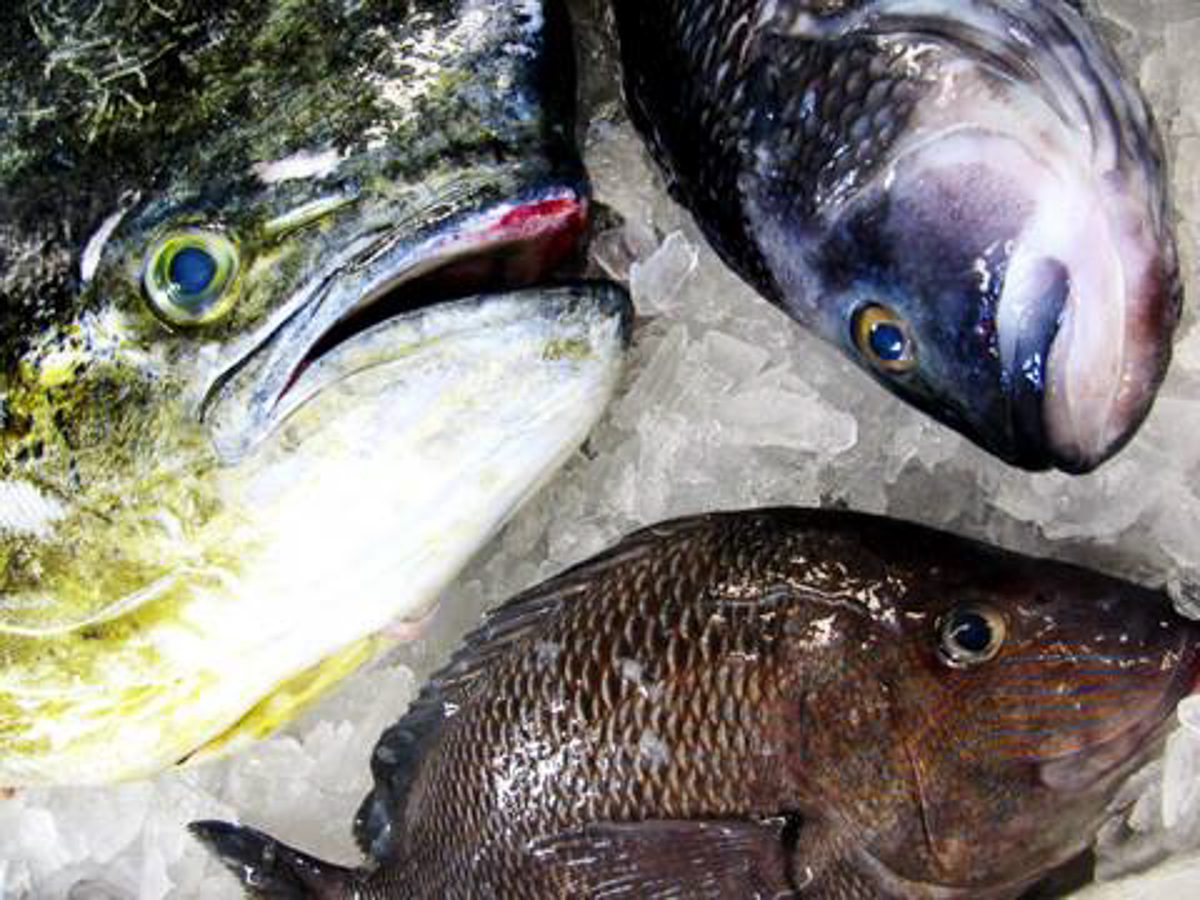
The term “sustainable seafood” gets used a lot with regard to the fishing and aquaculture industries — it’s a phrase that varies in meaning and is used everywhere from policy directives to marketing strategies. But what does it really mean?
Colloquially, the term “sustainable” is often in reference to environmental impact, with regard to overfishing and making sure that meeting human demands doesn’t destroy ocean ecosystems. Commercial fisheries in the United States are regulated against overfishing, but that doesn’t mean it is not a problem — a growing demand for seafood coupled with climate change related pressures put a lot of strain on the ocean’s capacity to keep producing fish for people to consume.
Supporter Spotlight
Meanwhile, the world’s population continues to grow. It is currently at 8 billion and estimated to be 11.2 billion by the end of the century. This growth puts additional pressure on the ocean. Paired with limitations faced by land-based farming, researchers have pointed to the ocean as a possible venue for growable food in light of this trend. In 2020, the United Nations released a report saying that aquaculture had already improved food security globally. Still, this conversation is not without an important caveat — farming seafood is not a panacea solution, and there are many forms of aquaculture that can harm both the environment and local communities instead of benefiting them.
When it comes to the human diet, the ocean is a potential resource for “good” food. We have long known about the health benefits associated with incorporating fish into your weekly diet — they are abundant in healthy fats, amino acids and other things that help our bodies function well. In the U.S. Department of Agriculture and U.S. Department of Health and Human Services’ 2020 report of dietary recommendations, a document the agencies release every five years, there’s an emphasis on the importance of consuming high-quality seafood across age groups and demographic populations.
The trouble with that has long been that seafood remains one of the most difficult proteins to acquire at an affordable price point. Economically speaking, the wild-caught seafood industry provides North Carolina with 5,500 jobs and brings in $300 million in value to the state. But when we talk about this economic benefit, to the state and to the country beyond, which communities are being cut out of the picture due to economic or physical access? Who is inadvertently excluded from conversations about “sustainable seafood”?
One understanding of sustainability is that for something to be sustainable, it has to be supported by three pillars of economic, social and environmental strength. When we try to figure out if seafood has a place in a sustainable future, all three of those aspects must be evaluated. In this special series, which is a joint product of North Carolina Health News and Coastal Review, we will look at each of these pillars closely.
Next, this series will examine the environmental impacts of both aquaculture and commercial fisheries, and how those industries may have to change or adapt in order to be practical in a changing world. We will also examine who can afford to eat seafood, and provides a mosaic look at North Carolina’s subsistence fishers. And finally, the series looks at the social mechanisms of supply and demand, education, labeling and representation. There will be overlap among these three stories, as the issues are impossible to truly extricate from each other.
Supporter Spotlight
This series follows the White House Conference on Hunger, Nutrition, and Health, held Sept. 28. The conference sought to investigate how to end hunger, reduce diet-related diseases and disparities and improve nutrition for the country. The only other time that this conference has been held was in 1969, more than 50 years ago. The ways that hunger and nutrition play out in American society have changed dramatically in the last half century. Conversations around climate, conservation, social equity and business have all evolved.
Seafood, and the important role it plays in our diets and our economies is no exception. The remainder of this series will examine the role the seafood industry plays in North Carolina’s food supply, how it has evolved to this point, and what it will look like in the future.
This is second in a series examining the role and sustainability of seafood in a healthy diet and is published in collaboration with North Carolina Health News. Next in the series: The seafood footprint.








